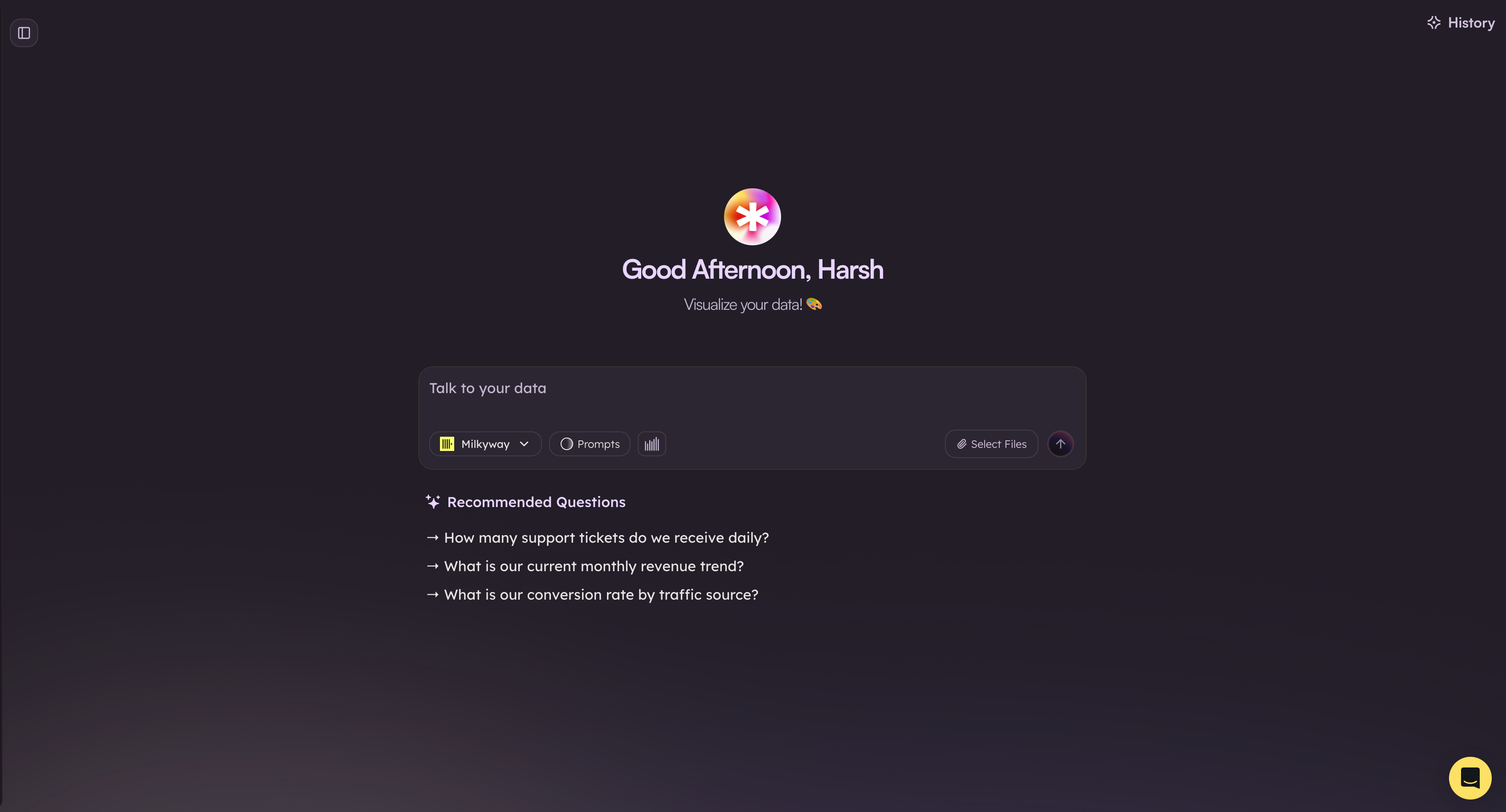
Who this is for
- New users who want to see value in minutes
- Teams evaluating SyneHQ for SaaS or enterprise self-hosting
- Stakeholders who want a fast, realistic demo path
You can use SyneHQ as a managed SaaS or deploy it in your own environment (enterprise). This quick start focuses on the fastest SaaS path, with notes for self-hosted where relevant.
Step 1 — Sign in
- Go to
https://data.synehq.com - Create an account or sign in
- Complete the onboarding tour (optional)
Step 2 — Connect a data source (2 minutes)
- Go to
Home → Connections - Click
Add connection - Choose your database (e.g., PostgreSQL, MySQL, MongoDB)
- Enter host, database, user, and password
- Click
TestthenSave

Prefer a guided setup? Use the help in
Home → Connections for a step‑by‑step tour.See supported data sources
Full list of SQL, NoSQL, and analytics sources
Setp 3 - Ask your first question
- Go to
Chat → Chat Input - Select your connection of choice
- In the ask box, type: “Show me a heatmap of trip density by neighbourhood”

Step 4 — Ask your first database query
- Go to
Console → Queries - In the ask box, type: “Show me total revenue by month”
- Select your connection, then run
- Review the generated SQL and results
AI features
Tips for better natural language questions
Step 4 — Visualize and share
- Click
Visualizeand choose a chart type - Save as a
Dashboard(name it “Revenue Overview”) - Share with your team using access controls
Create dashboards
From query to chart in one click
Deployment options
SaaS, self‑hosted (enterprise), or hybrid
Optional — Self-hosted quick path (enterprise)
- Deploy the app, then repeat Steps 2–4 inside your environment
- Use secure tunneling for local/private databases
- Integrate SSO and enterprise RBAC
Enterprise deployment
Install with Docker, Compose, or Kubernetes
Troubleshooting
- Connection failed: Verify host/port, network/firewall, and credentials
- SSL errors: Ensure correct certificates or disable verify in dev
- No tables found: Check DB permissions for the SyneHQ user
- Slow queries: Start with smaller tables; see performance tips
Connection guide
Connection strings, security, and tuning
Performance tips
Caching, indexing, and scaling options
Next steps
- Connect more sources (PostgreSQL + MongoDB + ClickHouse)
- Try cross‑database joins (“Compare web and app users”)
- Build a team dashboard and schedule reviews
- Set up SSO and roles for your organization